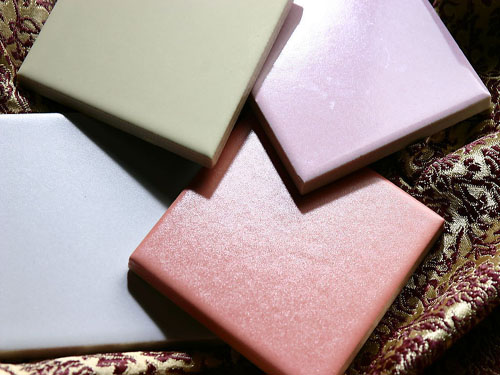 The ceramic tile industry is currently witnessing four major trends: neo-mixivism, new environmentalism, new imitation stone, and new cubism. Industry experts predict that these trends will dominate the market in the coming years, shaping the future of ceramic design and application.
As living standards continue to rise, consumer demands for ceramic tiles are becoming more sophisticated. Tiles are no longer just used for flooring; they now extend to walls in kitchens, bathrooms, building halls, and even decorative facades. This shift reflects a growing desire for both functionality and aesthetic appeal in home and commercial spaces.
Ceramic tiles can be classified based on water absorption rates into five main types: porcelain tiles, glazed tiles, fine stoneware tiles, earthenware tiles, and ceramic tiles. Depending on their use, they can also be categorized as wall tiles, floor tiles, or exterior tiles. From a material perspective, they include glazed tiles, full-body tiles, polished tiles, vitrified tiles, and mosaics.
With advancements in production techniques, the surface colors, patterns, and textures of ceramic tiles have evolved significantly. This allows for more diverse interior designs that cater to individual preferences. Light colors like white, beige, and light yellow are popular for creating a sense of space and cleanliness. Bright shades such as blue, green, and yellow can influence mood, while darker tones like black, red, and imitation stone evoke a luxurious feel.
Glazed tiles remain one of the most commonly used materials in interior design due to their vibrant colors and resistance to stains. They come in glossy and matte finishes and are made from either clay or porcelain. Clay-based glazed tiles have higher water absorption and a red back, while porcelain-based ones offer lower absorption and a grayish-white back.
In recent years, mosaic tiles have gained popularity in home decoration. Made up of small pieces, they are resistant to acid, waterproof, durable, and available in a wide range of colors. Despite their small size, they offer versatile applications, allowing designers to create intricate patterns and add visual interest when combined with other materials.
High-end ceramic tiles are now seen as premium options in luxury interiors. For instance, "streamer jade" tiles use advanced digital printing technology to achieve a crystal-like finish that exudes elegance. Marble-effect tiles mimic the look and feel of natural stone, often offering better durability and consistency than real marble.
Today, environmental awareness is influencing consumer choices across industries, including ceramics. More buyers are concerned about whether the tiles they purchase meet eco-friendly standards and have low radiation levels. One example is anion-embedded tiles that incorporate tourmaline powder and rare earth elements into the glaze, releasing ions that simulate the air quality of a forest, making them a healthier choice for modern homes.
The ceramic tile industry is currently witnessing four major trends: neo-mixivism, new environmentalism, new imitation stone, and new cubism. Industry experts predict that these trends will dominate the market in the coming years, shaping the future of ceramic design and application.
As living standards continue to rise, consumer demands for ceramic tiles are becoming more sophisticated. Tiles are no longer just used for flooring; they now extend to walls in kitchens, bathrooms, building halls, and even decorative facades. This shift reflects a growing desire for both functionality and aesthetic appeal in home and commercial spaces.
Ceramic tiles can be classified based on water absorption rates into five main types: porcelain tiles, glazed tiles, fine stoneware tiles, earthenware tiles, and ceramic tiles. Depending on their use, they can also be categorized as wall tiles, floor tiles, or exterior tiles. From a material perspective, they include glazed tiles, full-body tiles, polished tiles, vitrified tiles, and mosaics.
With advancements in production techniques, the surface colors, patterns, and textures of ceramic tiles have evolved significantly. This allows for more diverse interior designs that cater to individual preferences. Light colors like white, beige, and light yellow are popular for creating a sense of space and cleanliness. Bright shades such as blue, green, and yellow can influence mood, while darker tones like black, red, and imitation stone evoke a luxurious feel.
Glazed tiles remain one of the most commonly used materials in interior design due to their vibrant colors and resistance to stains. They come in glossy and matte finishes and are made from either clay or porcelain. Clay-based glazed tiles have higher water absorption and a red back, while porcelain-based ones offer lower absorption and a grayish-white back.
In recent years, mosaic tiles have gained popularity in home decoration. Made up of small pieces, they are resistant to acid, waterproof, durable, and available in a wide range of colors. Despite their small size, they offer versatile applications, allowing designers to create intricate patterns and add visual interest when combined with other materials.
High-end ceramic tiles are now seen as premium options in luxury interiors. For instance, "streamer jade" tiles use advanced digital printing technology to achieve a crystal-like finish that exudes elegance. Marble-effect tiles mimic the look and feel of natural stone, often offering better durability and consistency than real marble.
Today, environmental awareness is influencing consumer choices across industries, including ceramics. More buyers are concerned about whether the tiles they purchase meet eco-friendly standards and have low radiation levels. One example is anion-embedded tiles that incorporate tourmaline powder and rare earth elements into the glaze, releasing ions that simulate the air quality of a forest, making them a healthier choice for modern homes.A Shower Faucet (also spigot or tap: see usage variations) is a valve controlling the release of a liquid that enabling washing and drying in the bathroom.
Shower Faucet,Single Handle Shower Faucet,Single Lever Bathtub Faucet,Hot Cold Water Shower Head
Kaiping Jenor Sanitary Ware Co., Ltd , https://www.jenorsanitary.com